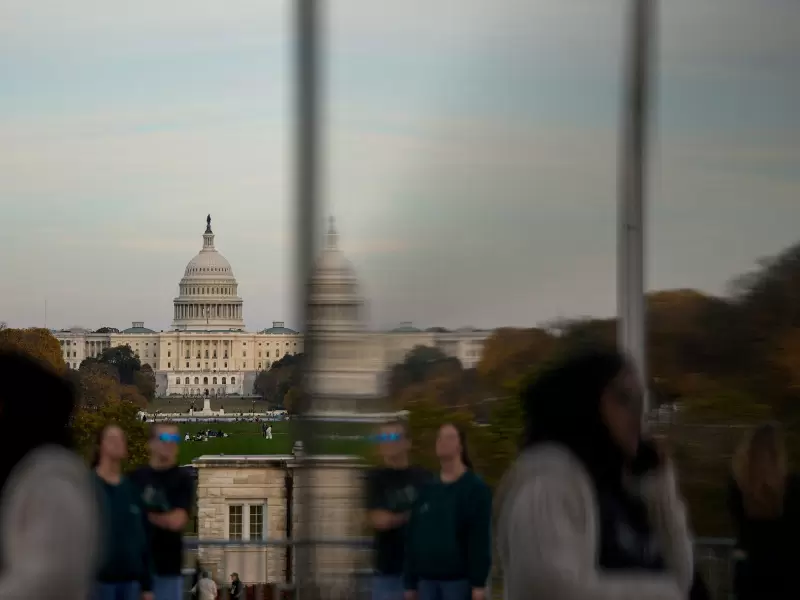Canadian wildfire smoke spreads into US Midwest
The particulate matter pollution caused by the smoke is already blowing into Minnesota and neighboring states, posing a health risk to the tens of millions who live in the region.
.JPG) A haze from Canadian wildfire smoke causes poor air quality in Duluth, Minnesota, U.S. June 3, 2025. / REUTERS/Erica Dischino
A haze from Canadian wildfire smoke causes poor air quality in Duluth, Minnesota, U.S. June 3, 2025. / REUTERS/Erica Dischino
Smoke from wildfires burning in three Canadian provinces is spreading into the U.S. Upper Midwest, stirring memories of the severe pollution that drifted south from Canada two years ago during that country's worst fire season on record.
The particulate matter pollution caused by the smoke is already blowing into Minnesota and neighboring states, posing a health risk to the tens of millions who live in the region. It is expected to make its way to New York and other East Coast cities in less severe levels over the coming days.
Also Read: Airline chiefs meet in India amid turbulence of Trump
"Airborne particulate matter is the most serious environmental health risk we know of," said Doug Brugge, a public health researcher at the University of Connecticut School of Medicine. "It causes cardiovascular, respiratory and neurological harm, and these plumes of smoke are at very high levels compared to what we're usually exposed to in the U.S."
Scores of wildfires have swept across Canada since the start of May, forcing thousands of evacuations and disrupting crude oil production in the country. There were more than 200 active fires as of June 2, 106 of which were out of control, according to the Canadian Interagency Forest Fire Centre.
So far, 1.9 million hectares (4.7 million acres) have burned, mostly in the provinces of Alberta, Saskatchewan and Manitoba. Still, the current crisis does not yet come close to rivaling 2023, when 17 million hectares burned.
The air quality rating in New York is expected to rise to 77 in the early morning on June 4 as a result of the fires, while readings in Philadelphia and Washington will also rise to 70 and to 68 in Boston, according to IQAir, a website that monitors air quality around the world.
An air quality rating of below 50 is considered to be "good," and readings between 100 and 300 are deemed "unhealthy" to "very unhealthy," while higher than that is considered "hazardous," according to the website.
One of the worst spots for air quality on Tuesday afternoon was Ely, Minnesota, near the Manitoba border. It registered a "hazardous" reading of 336.
In Duluth, Minnesota, the rating stood at 164 on June 3 afternoon, having dropped from 309, while in Flin Flon, Manitoba, about 800 miles (1,300 km) to the north and in one of the areas where the Canadian wildfires are concentrated, the AQI was at 202, down from 359 in the morning.
In IQAir's list of the world's major cities, Minneapolis ranked as third worst air quality, with a 168 reading, tying with Kinshasa in the Democratic Republic of the Congo.
VULNERABLE PEOPLE
Children, the elderly and people with chronic cardiac, respiratory and other illnesses are most vulnerable to the effects of the smoke, especially those with cardiovascular problems, according to Brugge.
"The risk of hospitalization and death is low in people who are healthy and at a young age," he said, adding that there is still evidence that air pollution exposure increases blood pressure and inflammation for those people.
Exposure to wildfire smoke may also increase lung cancer patients' risk of dying from their disease, particularly among non-smokers, although the effect may be mitigated by certain cancer treatments, according to a large California study presented last month.
Nonetheless, some farmers believe the effects of the fires are not all negative. In online forums like Facebook, some farmers have said some of their best yields ever came from years with a heavy pall of wildfire smoke from Canada. The smoke can protect vulnerable crops from scorching sunlight, they think.
ADVERTISEMENT
ADVERTISEMENT
E Paper
Video



 Reuters
Reuters












Comments
Start the conversation
Become a member of New India Abroad to start commenting.
Sign Up Now
Already have an account? Login